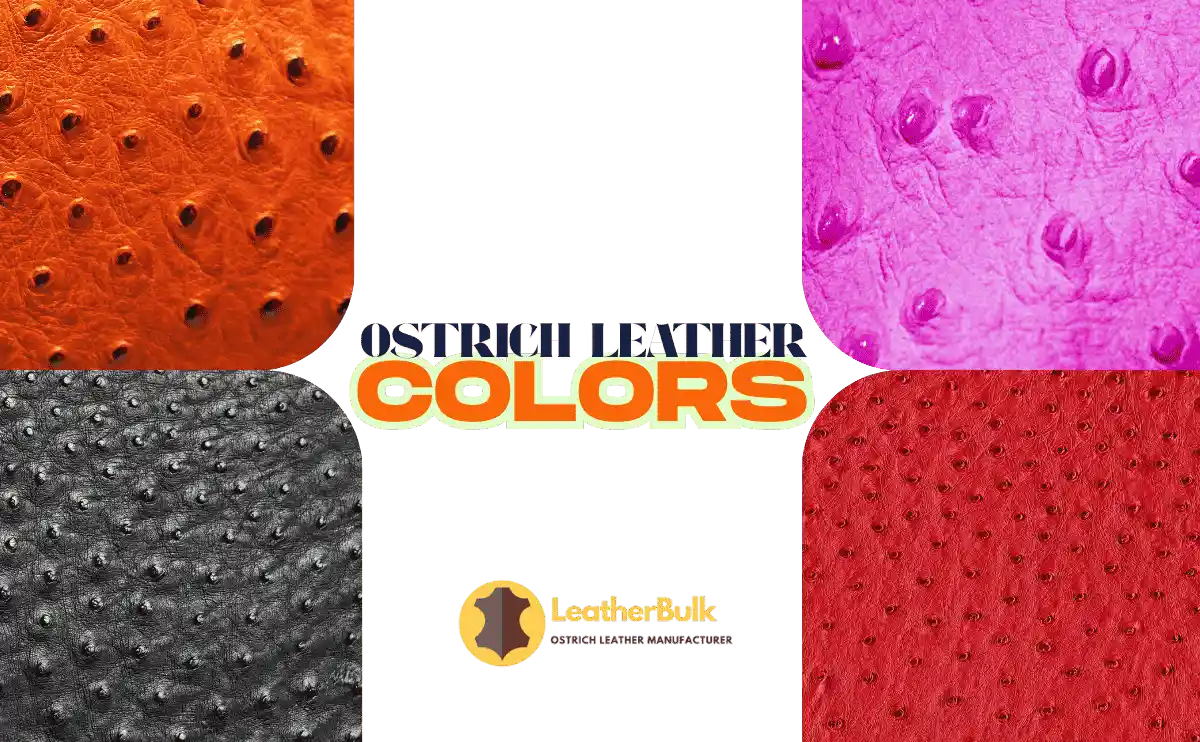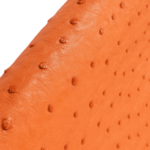A Closer Look at Ostrich Leather Colors: What Makes Them So Unique?

When people talk about exotic leather, ostriches are often one of the most eye-catching materials out there. It's not just the texture that makes it special—the colors of ostrich leather are a big part of its appeal. Whether you're into soft neutrals or bold fashion-forward shades, this leather has something to offer. Let's dive into the world of ostrich hide shades and see what makes them so versatile, and why they're such a hit in fashion and design.
Natural Beauty First
Before any dye is applied, natural ostrich leather has a soft, beige to light tan tone. Some pieces lean toward ivory, others a dusty brown, depending on the bird's age and where on the skin the piece comes from. These natural tones are often used without heavy dyeing, especially in high-end goods where the organic look is appreciated.
Many leather artisans love working with the natural form because it lets the classic pattern of quill bumps shine through—those famous little raised dots that make ostrich leather easy to recognize.
How Ostrich Leather Is Dyed?
Coloring ostrich leather is an art. Because it's a porous and soft material, it takes dye extremely well. But it also means every piece can soak in color differently. That's why two hides dyed the same color might still have slight variations—that's part of the charm.
There are two common finishing styles:
- Aniline-dyed: The color penetrates deeply while keeping the leather soft and natural-looking.
- Pigmented or semi-aniline: Offers a more even tone and better protection against fading or stains.
Luxury brands often go with aniline for a more refined, high-end feel, especially in fashion accessories.
Common Ostrich Leather Colors
Here are some of the most popular shades you'll see, whether it's in handbags, wallets, furniture, or shoes:
1. Classic Black
You can never go wrong with black. It's sleek, formal, and goes with anything. Ostrich leather in Black is often used in luxury bags and men's shoes because it combines richness with durability.
2. Deep Brown and Cognac
Warm browns like chocolate or cognac are favorites in wallets, belts, and upscale briefcases. These tones highlight the natural patterns of the skin without overshadowing it.
3. Tan and Beige
These earthy colors are all about subtle elegance. Tan ostrich leather has a way of aging beautifully, getting a soft patina over time. It's often chosen for boots and bags where character is valued.
4. Navy and Dark Blue
A little less traditional but still quite classy. Navy is a favorite among people who want something different without going too far. It works well in jackets, shoes, and even upholstery.
5. Burgundy and Wine Red
Looking for a bold statement? Wine shades on ostrich leather are rich and dramatic. These colors show up in handbags and high-end fashion items that want to stand out.
6. Bright and Trendy Colors
Thanks to how well ostrich leather absorbs dye, it can be made in all kinds of fun and vibrant shades—mustard yellow, emerald green, coral pink, electric blue—you name it. These popular ostrich leather colors for fashion come and go with the trends, but are always eye-catching.
What Affects Color Choice?
The color you choose for ostrich leather depends on more than just personal taste. Here are some things to think about:
1. Use of the Leather
Items that get more handling, like wallets or handbags, often stick to medium or dark colors to hide wear. Light colors can show scratches and stains more easily unless they're specially finished.
2. Target Market
Fashion brands selling to younger crowds might go for bold colors. In contrast, products aimed at business professionals tend to stick with neutral tones.
3. Lighting and Finish
The same color can look very different depending on whether the leather is matte, semi-gloss, or fully glossy. Some pieces are even given a two-tone or "antique" finish, where the raised parts of the leather are slightly darker than the base.
Custom Colors and Limited Editions
For luxury clients and designers, ostrich hide shades can be fully customized. You'll find limited runs of products in unique colors, and sometimes only a few pieces are produced in that shade. These exclusive colors are a big part of what makes ostrich leather feel special—it's not mass-produced like other types of leather.
Some tanneries even allow customers to pick the Pantone code and create a hide dyed exactly to that color. Of course, Services of this nature typically entail a greater cost and extended waiting times.
How the Color Holds Up?
One of the best things about ostrich leather is how well the color lasts. If the hide has been properly treated, the dye won't easily fade or wear off. High-quality ostrich leather ages gracefully, often getting softer and richer in tone over time.
That said, it's still a good idea to care for it properly. Keeping it out of direct sunlight, avoiding contact with water, and using a leather conditioner can help preserve the color and softness.
Matching Ostrich Leather Colors to Your Brand
If you're a designer or business that works with leather goods, choosing the right ostrich leather colors can help define your brand. A timeless brown might suggest craftsmanship and tradition, while a bold green or purple could scream modern luxury or edgy fashion.
Some brands are even known for a particular shade—think of Hermès orange or Tiffany blue.
Final Thoughts
Whether you're into traditional styles or looking to make a striking assertion, the diverse array of colors found in ostrich leather lets you express your vision down to the last detail.
And because this material holds dye so beautifully, it's one of the few exotic leathers where color plays as important a role as the texture. So if you're working with or shopping for exotic leather, keep an eye on the color options—you might just find something that's perfect for your next design.
Al Quoz Industrial Area, United Arab Emirates




